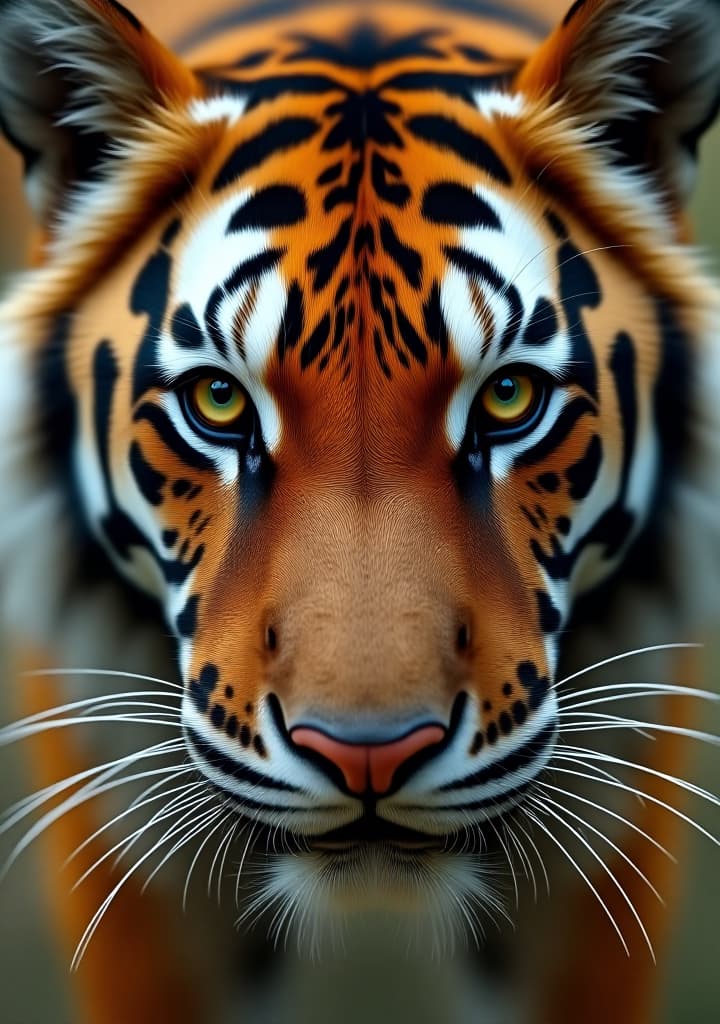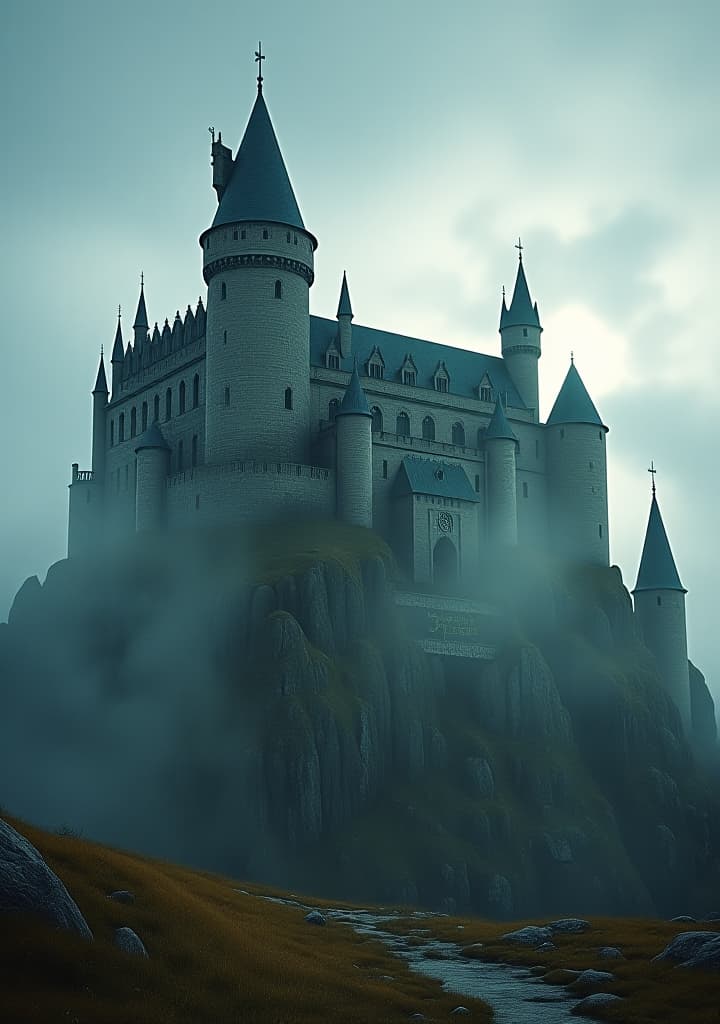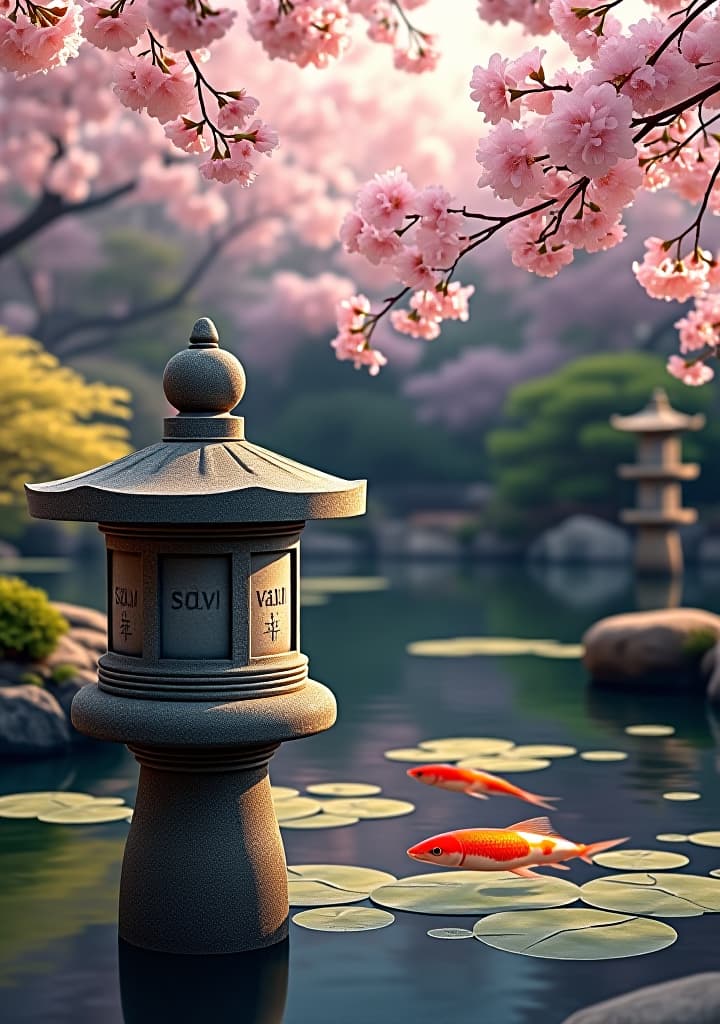
Author: Stability
- No. API Calls
- 1733986
- Uploaded
- Sep 21, 2024
- Base Model
- stabilityai/stable-diffusion-xl-base-1.0
- Model ID
- sdxl
Images
Generated
Images generated with SDXL 1.0 and its prompt
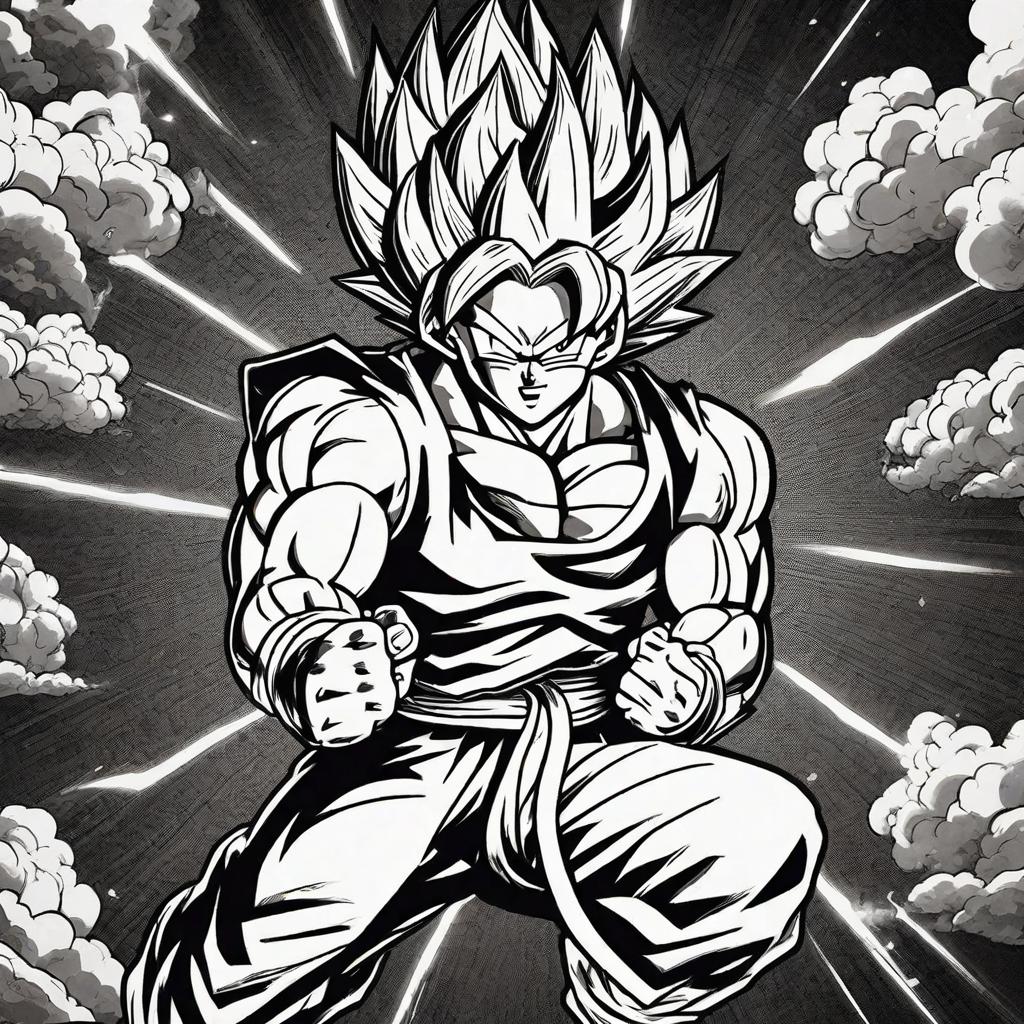
masterpiece, best quality, Main Focus: Goku's First Spirit Bomb Position: Goku in his iconic pose, summoning the Spirit Bomb, positioned around your shoulder. The Spirit Bomb itself would be a focal point, glowing brightly at the top of your shoulder. Additional Characters and Scenes: Vegeta and Gohan: Below Goku, perhaps on your upper arm, Vegeta and Gohan could be shown in dynamic fighting stances, representing other key moments or battles. Frieza: To balance the composition, Frieza can be depicted on your lower arm, possibly in his final form, to add intensity and drama to the narrative of the sleeve. Shenron: Weaving through the scenes could be Shenron, the dragon, as a unifying element that ties the whole sleeve together. Art
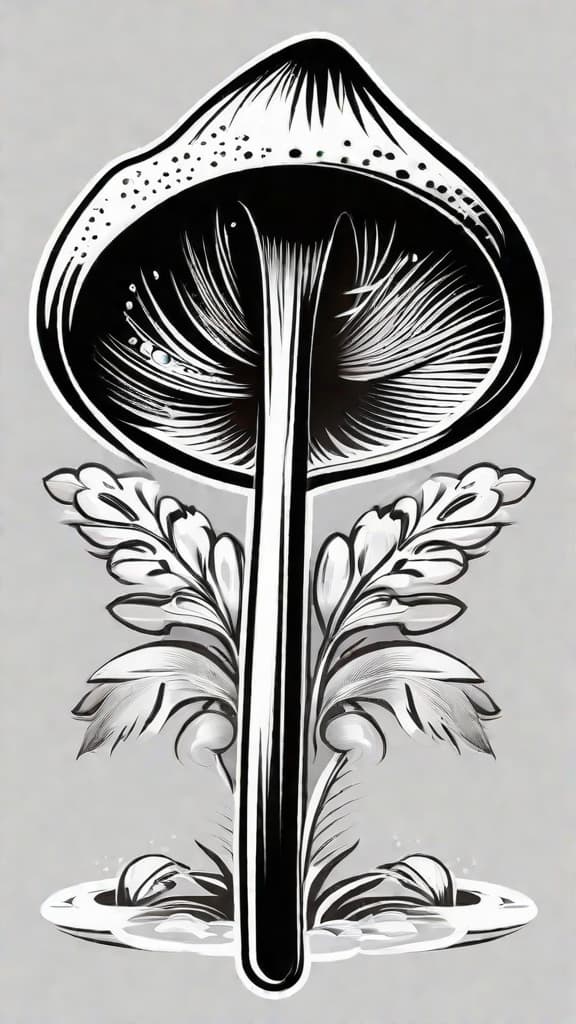
masterpiece, best quality, a broom. crystals growing from the head of the broom. Mushrooms sprouting from the stick of the broom. A tattoo stencil style on a white background.
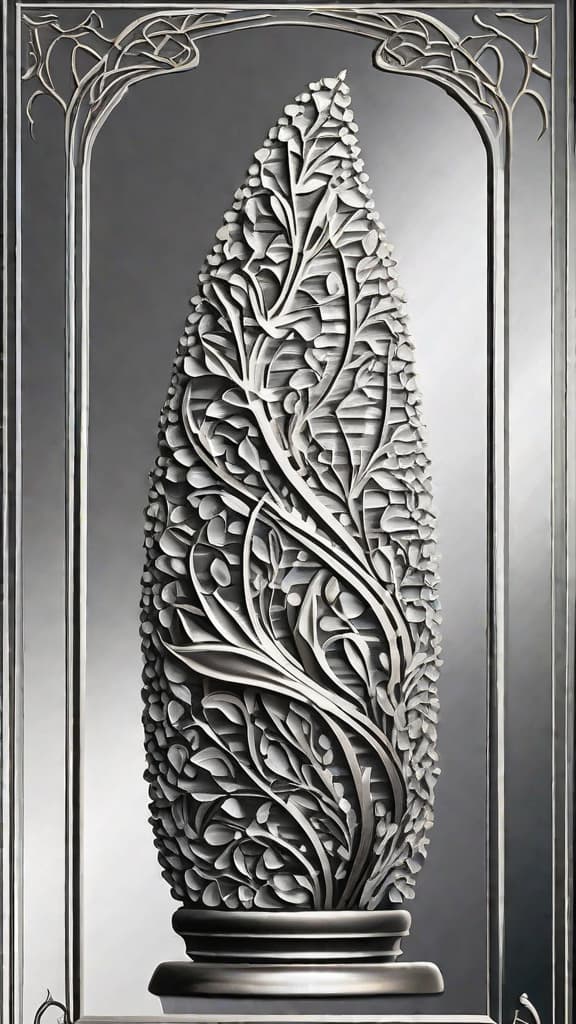
masterpiece, best quality, A close-up shot of a solitary witches broom stands tall against a white background. Its wild bristles, made of tangled vines, twist and turn in every direction, creating an intricate pattern. Adorning its head are shimmering geode crystals, catching the light and casting a mesmerizing glow. The style of the image resembles a detailed tattoo stencil, with precise lines and intricate shading. The high resolution allows for every intricate detail to be captured, while the monochromatic color palette, emphasizing the black and white contrast, adds a touch of elegance and mystery. The lighting is soft, casting a gentle glow on the broom, highlighting its unique features. Realized with a high-end camera, the image showc
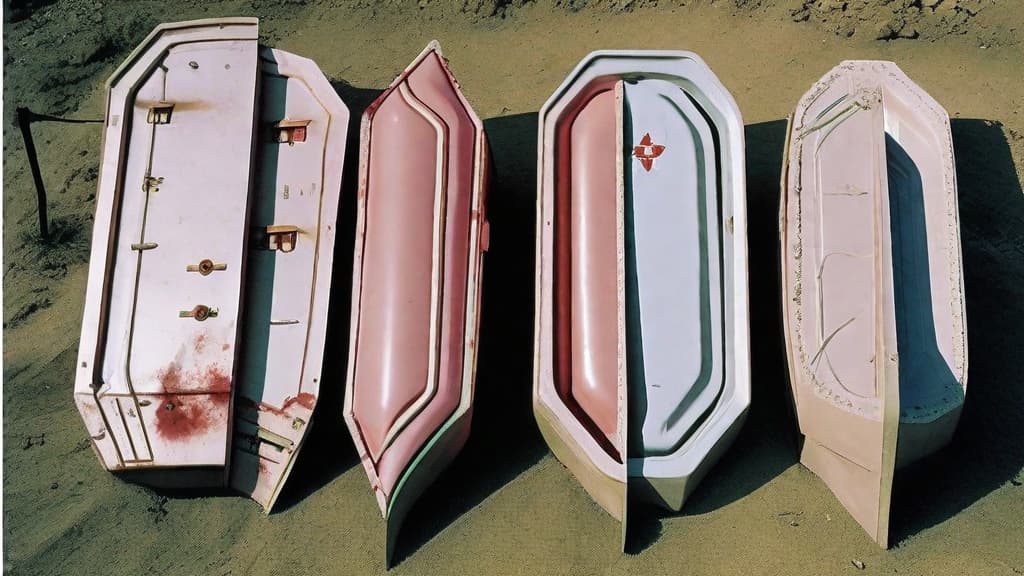
First responders, power plant workers, firefighters, and liquidators who were exposed to lethal doses of radiation in the immediate aftermath of the Chernobyl explosion or during the cleanup efforts and died shortly thereafter were buried in special coffins made of zinc. These coffins were designed to be airtight and waterproof, and were often lined with a layer of lead or other sealing materials. The burials took place in designated, restricted areas, often beneath layers of concrete. Funerals were conducted quickly and with a high level of secrecy, without access for family members, in order to prevent gathering near highly radioactive remains. This method was believed to effectively contain the radiation within the bodies and prevent its
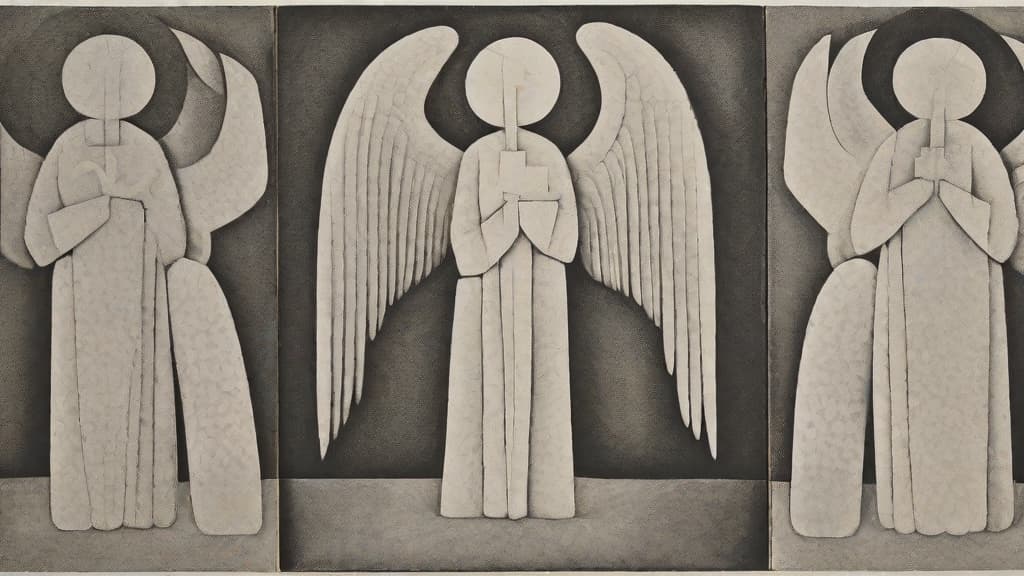
The description you’ve provided evokes the vision of Walter Benjamin’s "Angel of History," inspired by Paul Klee's painting "Angelus Novus." This transformation of the prompt integrates Benjamin’s philosophical musings on history, progress, and destruction with the dramatic visual imagery of the photograph. In this new context, the figure can be interpreted more deeply as an allegory for the human condition and societal progression, rather than merely a mythical being in turmoil. The reinterpretation might draw upon this backdrop, emphasizing how the concept of history as a continuous accumulation of wreckage relates to the individual's experience amid the disintegrating environment. The narrative could highlight the paradox of progr
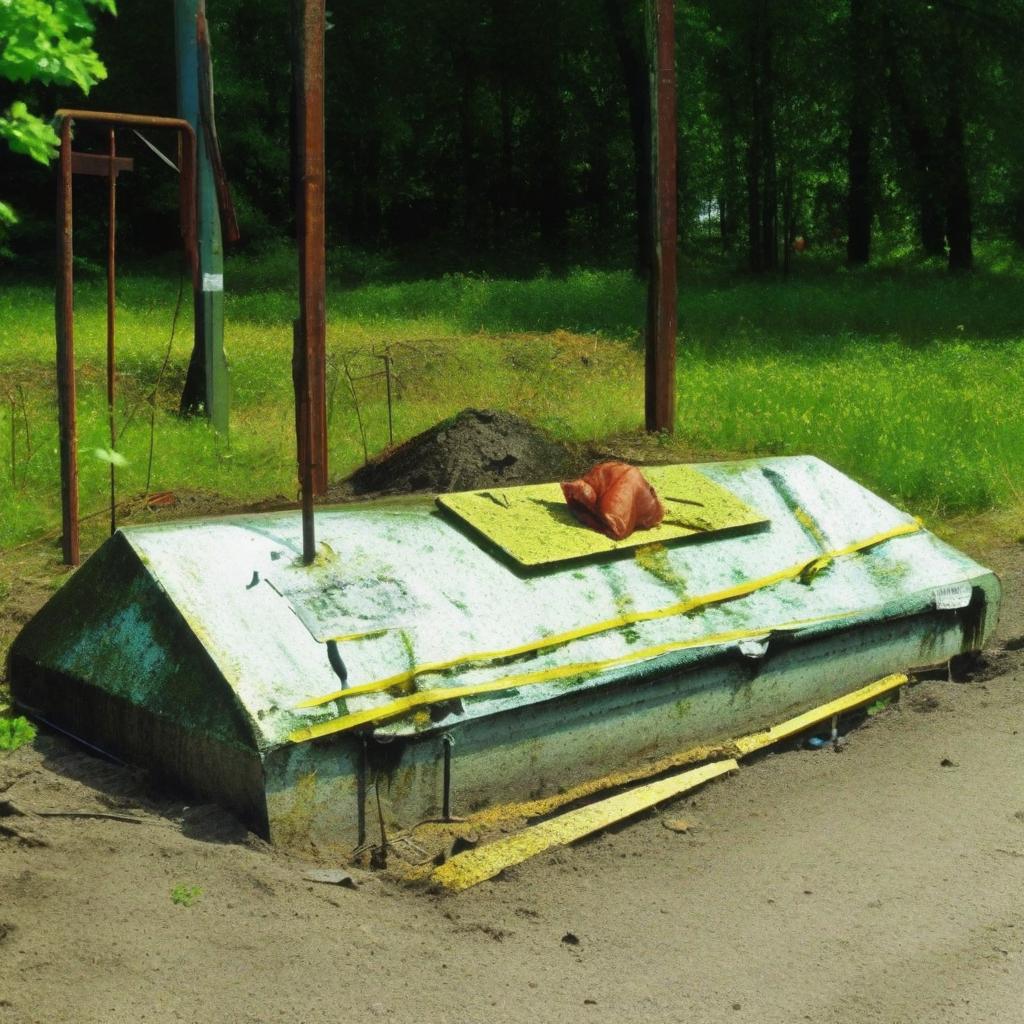
First responders, power plant workers, firefighters, and liquidators who were exposed to lethal doses of radiation in the immediate aftermath of the Chernobyl explosion or during the cleanup efforts and died shortly thereafter were buried in special coffins made of zinc. These coffins were designed to be airtight and waterproof, and were often lined with a layer of lead or other sealing materials. The burials took place in designated, restricted areas, often beneath layers of concrete. Funerals were conducted quickly and with a high level of secrecy, without access for family members, in order to prevent gathering near highly radioactive remains. This method was believed to effectively contain the radiation within the bodies and prevent its
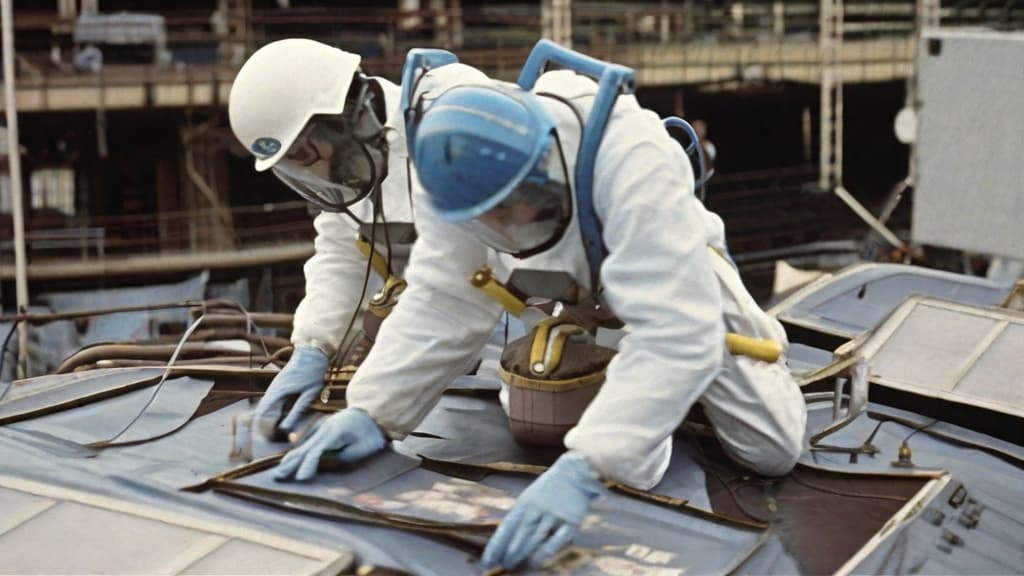
The most complex decontamination mission given to the liquidators involved cleaning the roof of the Chernobyl Power Plant Reactor No. 4 that had exploded. Several robots were initially deployed for the cleaning mission, but all of them malfunctioned due to the high levels of radiation. The only solution was to deploy humans, so called bio robots, to manually remove the highly radioactive rubble and debris. There were about 3750 bio robots operating on that roof. They were given improvised aprons and vests lined with lead to protect them from radiation. Lead pieces were also placed in other areas of the body.
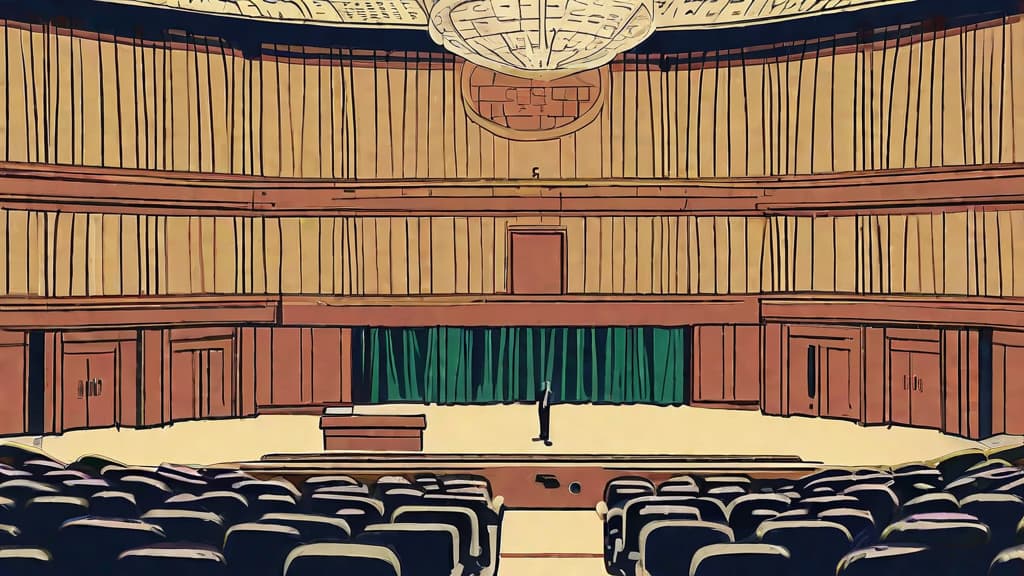
The Chernobyl trial took place roughly a year after the disaster, in the town of Chernobyl, approximately 9 kilometers from the power plant. It lasted only two weeks. For the proceedings, a community center was transformed into a courtroom. A curtain was placed to cover the depth of the stage, leaving only a narrow space on the proscenium to accommodate the three judges' seats and a small table for the stenographer (court reporter) next to them. The first rows in the audience section were removed to make space for the accused seating, defense and prosecution tables, witness stand, and security. The remaining seats were left for a small group of spectators and a limited number of journalists.
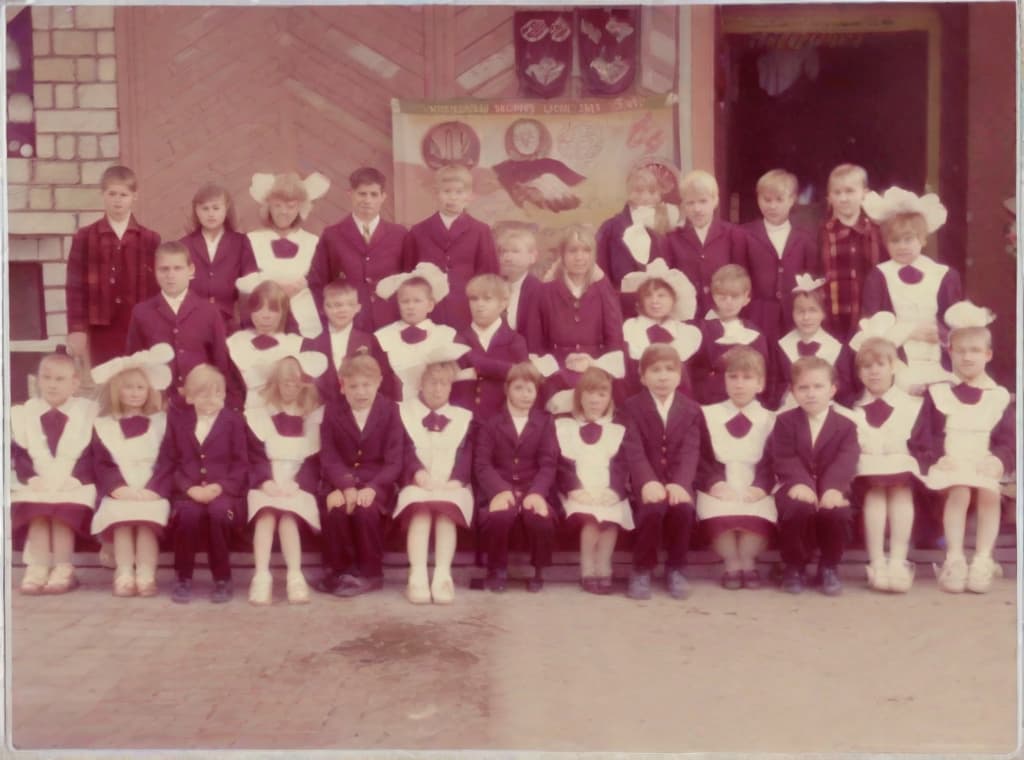
This photo was taken on September 1st 1986, exactly 128 days, or 4 months and 4 days, after the Chernobyl catastrophe took place. It captures my first day at in Gomel, Belarus. I had just turned that summer. In the photo, one can see my clmates and our teacher. Some are standing with their arms hanging beside their bodies, while others are seated on a low bench with their hands neatly placed on their . The students are arranged in three lines: 10 in the 3rd (top) back line, 9 in the 2nd (middle) line, and 13 in the 1st front line, totaling 32 students. There are 17 boys and 15 s, distinguished by the dress code. My friend Genadi is 4th from the right in the 3rd (top) line. I am seated in the very center of the
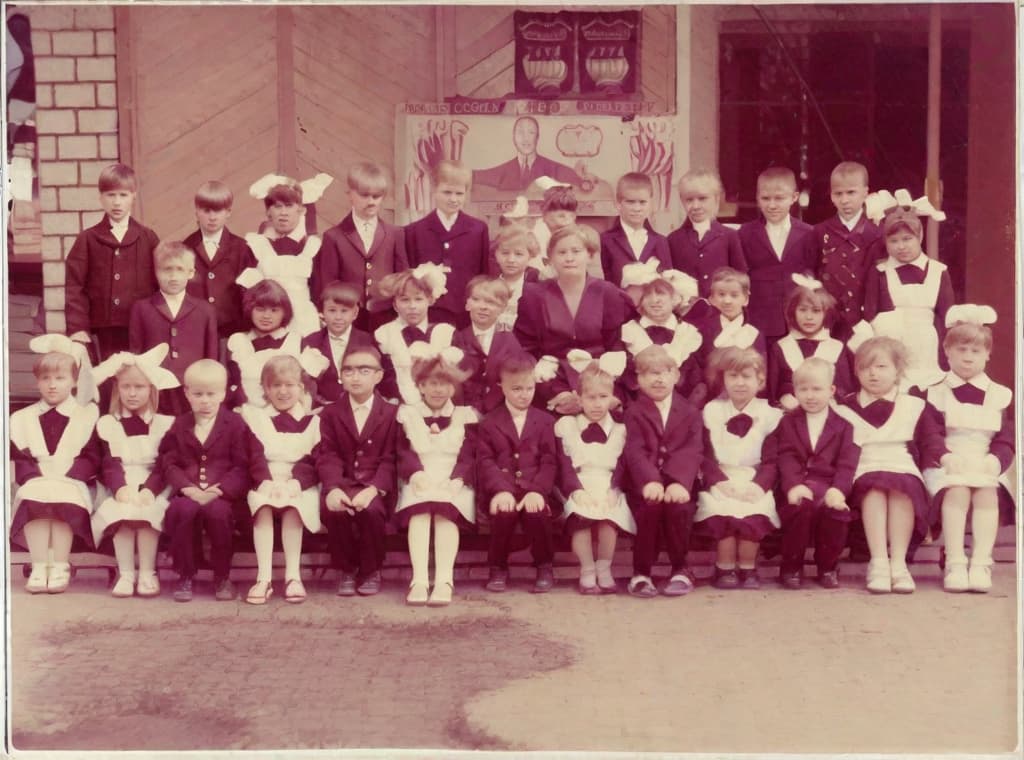
This photo was taken on September 1st 1986, exactly 128 days, or 4 months and 4 days, after the Chernobyl catastrophe took place. It captures my first day at in Gomel, Belarus. I had just turned that summer. In the photo, one can see my clmates and our teacher. Some are standing with their arms hanging beside their bodies, while others are seated on a low bench with their hands neatly placed on their . The students are arranged in three lines: 10 in the 3rd (top) back line, 9 in the 2nd (middle) line, and 13 in the 1st front line, totaling 32 students. There are 17 boys and 15 s, distinguished by the dress code. My friend Genadi is 4th from the right in the 3rd (top) line. I am seated in the very center of the

masterpiece, best quality, only a broom with a geode growing from the head and mushrooms sprouting from the stick tattoo stencil
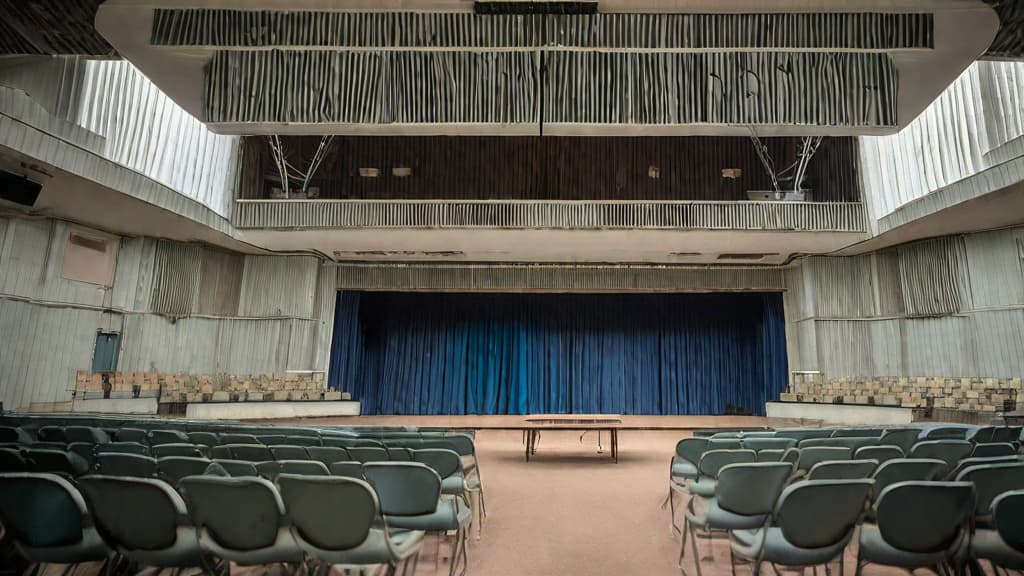
The Chernobyl trial took place roughly a year after the disaster, in the town of Chernobyl, approximately 9 kilometers from the power plant. It lasted only two weeks. For the proceedings, a community center was transformed into a courtroom. A curtain was placed to cover the depth of the stage, leaving only a narrow space on the proscenium to accommodate the three judges' seats and a small table for the stenographer (court reporter) next to them. The first rows in the audience section were removed to make space for the accused seating, defense and prosecution tables, witness stand, and security. The remaining seats were left for a small group of spectators and a limited number of journalists.
![[Sound of silence] After a momentary lull In the divergent paths of 1921, amidst Munich's unfurling chaos, philosopher and cultural theorist Walter Benjamin lived out an encounter with art that was ineffable, to say the least. Fortune had leaned his way when he, with a stroke of inexplicable luck, came upon Paul Klee's "Angelus Novus." It was a work secured not merely in transaction of 1,000 Marks, but intertwined with a possession in spirit. So much so that friend and playwright Charlotte Wolf gauged an enigma in his presence whenever it was about each new domicile, from then on, came laced with its essence. Not a sentinel in predictable narratives of vigil, but more like a muse in whispering echoes'd fuse through Benjamin's lexicon.](https://modelslab.com/cdn-cgi/image/quality=75/https://cdn2.stablediffusionapi.com/generations/0-30483cfd-698a-423c-b1f1-af83369f22bc.png)
[Sound of silence] After a momentary lull In the divergent paths of 1921, amidst Munich's unfurling chaos, philosopher and cultural theorist Walter Benjamin lived out an encounter with art that was ineffable, to say the least. Fortune had leaned his way when he, with a stroke of inexplicable luck, came upon Paul Klee's "Angelus Novus." It was a work secured not merely in transaction of 1,000 Marks, but intertwined with a possession in spirit. So much so that friend and playwright Charlotte Wolf gauged an enigma in his presence whenever it was about each new domicile, from then on, came laced with its essence. Not a sentinel in predictable narratives of vigil, but more like a muse in whispering echoes'd fuse through Benjamin's lexicon.
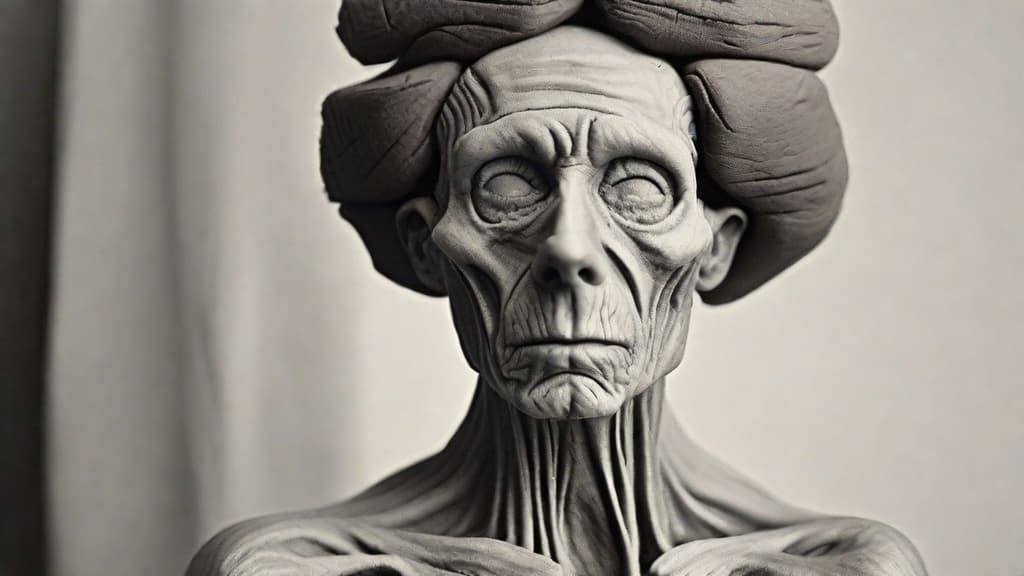
When my dad was dying from cancer, a slow death that lasted about three years, I experienced a vision during a therapy session, lying on the treatment table. table on my stomach facing the ground I was unable to stop weeping I saw a mirror image of myself it was a golem like figure made of earth and or clay matching my size and proportions forming itself directly under me. It floated beneath me. We had a brief conversation. I said to it that I didn't want to die yet.

masterpiece, best quality,Shizuka, Nobita and Doraemon accidentally cross over to the magical world of Harry Potter.
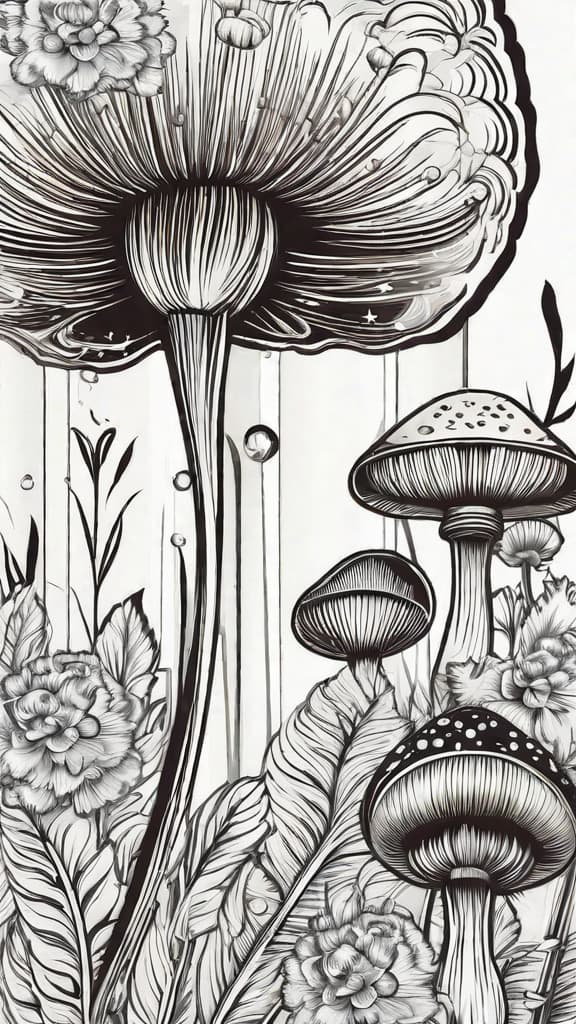
masterpiece, best quality, only a broom. crystals growing from the head of the broom. Mushrooms sprouting from the stick of the broom. A tattoo stencil style on a white background.
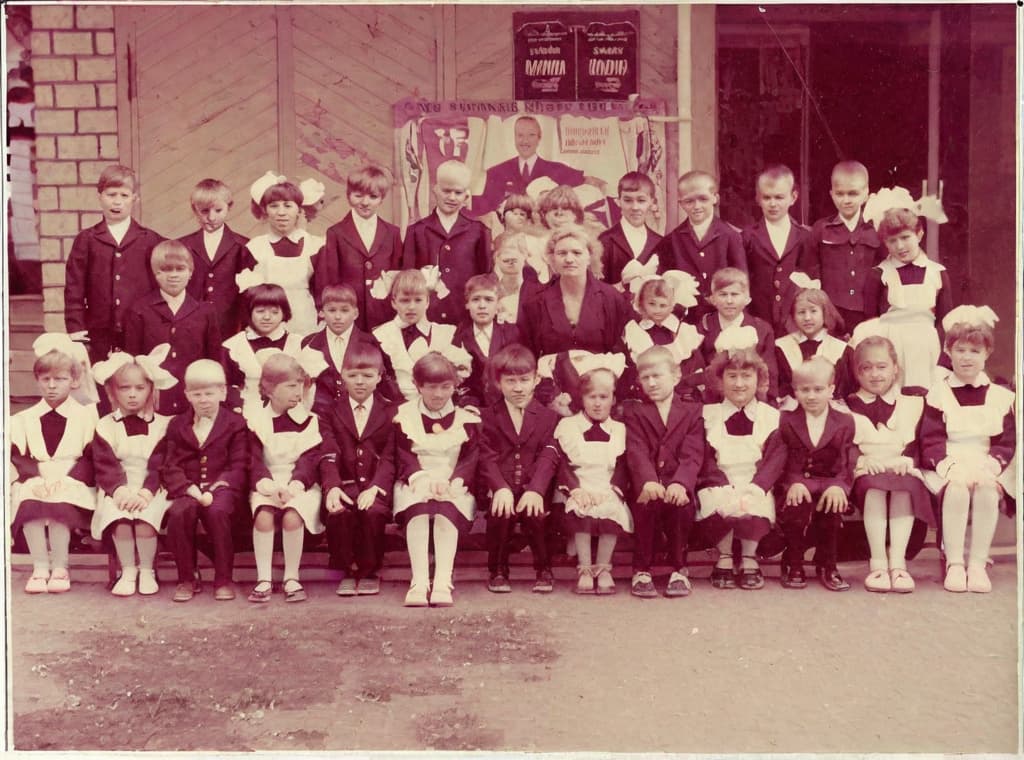
This photo was taken on September 1st 1986, exactly 128 days, or 4 months and 4 days, after the Chernobyl catastrophe took place. It captures my first day at in Gomel, Belarus. I had just turned that summer. In the photo, one can see my clmates and our teacher. Some are standing with their arms hanging beside their bodies, while others are seated on a low bench with their hands neatly placed on their . The students are arranged in three lines: 10 in the 3rd (top) back line, 9 in the 2nd (middle) line, and 13 in the 1st front line, totaling 32 students. There are 17 boys and 15 s, distinguished by the dress code. My friend Genadi is 4th from the right in the 3rd (top) line. I am seated in the very center of the
